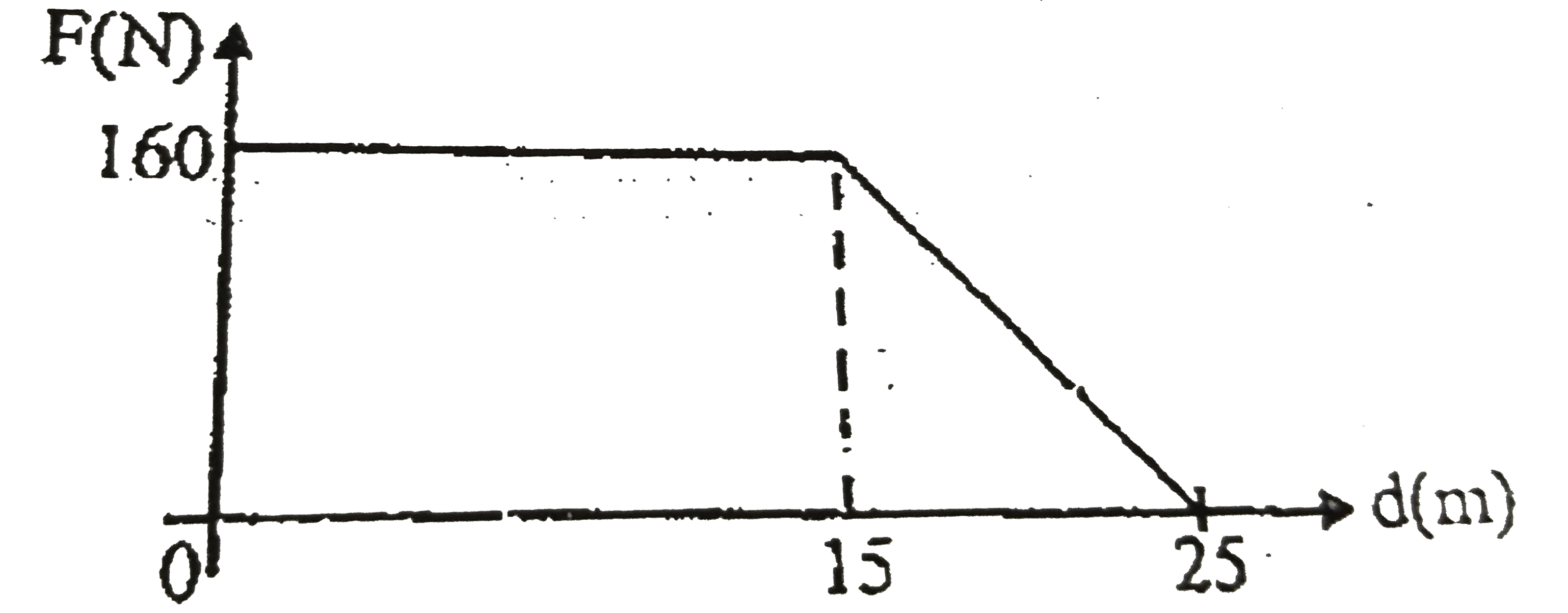a driver of a car travelling at 52km/h applies the brakes and acceleration uniformly in the opposite direction. The car stops in 5s. Another driver going at 34km/h in another car applies his brakes slowly and stops in 10s. On the same graph paper, plot the speed versus time graphs for the two cars. Which of the two cars travelled farther after the brakes were applied ?
To solve the problem step by step, we will follow these instructions:
Step 1: Convert the speeds from km/h to m/s
- For Car A:
52km/h=52×10003600=520003600≈14.44m/s
- For Car B:
34km/h=34×10003600=340003600≈9.44m/s
Step 2: Calculate the deceleration for both cars
- For Car A:
Initial speed(u)=14.44m/s,Final speed(v)=0m/s,Time(t)=5s
Using the formula v=u+at:
0=14.44+a⋅5⟹a=−14.445≈−2.89m/s2
- For Car B:
Initial speed(u)=9.44m/s,Final speed(v)=0m/s,Time(t)=10s
Using the formula v=u+at:
0=9.44+a⋅10⟹a=−9.4410≈−0.944m/s2
Step 3: Calculate the distance traveled by each car after the brakes were applied
- For Car A:
Using the formula s=ut+12at2:
sA=14.44⋅5+12⋅(−2.89)⋅(52)
sA=72.2−12⋅2.89⋅25=72.2−36.125≈36.075m
- For Car B:
Using the same formula:
sB=9.44⋅10+12⋅(−0.944)⋅(102)
sB=94.4−12⋅0.944⋅100=94.4−47.2≈47.2m
Step 4: Compare the distances traveled
From the calculations:
- Distance traveled by Car A: sA≈36.075m
- Distance traveled by Car B: sB≈47.2m
Thus, Car B traveled farther after the brakes were applied.
Summary of Results
- Car A traveled approximately 36.075 meters.
- Car B traveled approximately 47.2 meters.
- Therefore, Car B traveled farther after the brakes were applied.
- For Car A:
52km/h=52×10003600=520003600≈14.44m/s
- For Car B:
34km/h=34×10003600=340003600≈9.44m/s
- For Car A:
Initial speed(u)=14.44m/s,Final speed(v)=0m/s,Time(t)=5s
Using the formula v=u+at:
0=14.44+a⋅5⟹a=−14.445≈−2.89m/s2
Initial speed(u)=9.44m/s,Final speed(v)=0m/s,Time(t)=10s
Using the formula v=u+at:
0=9.44+a⋅10⟹a=−9.4410≈−0.944m/s2
- For Car A:
Using the formula s=ut+12at2:
sA=14.44⋅5+12⋅(−2.89)⋅(52)
sA=72.2−12⋅2.89⋅25=72.2−36.125≈36.075m
Using the same formula:
sB=9.44⋅10+12⋅(−0.944)⋅(102)
sB=94.4−12⋅0.944⋅100=94.4−47.2≈47.2m
From the calculations:
- Distance traveled by Car A: sA≈36.075m
- Distance traveled by Car B: sB≈47.2m
- Car A traveled approximately 36.075 meters.
- Car B traveled approximately 47.2 meters.
- Therefore, Car B traveled farther after the brakes were applied.
Topper's Solved these Questions
- MOTIONBOOK - PRADEEPCHAPTER - MOTIONEXERCISE - NCERT short answer question
7 Videos
- MOTIONBOOK - PRADEEPCHAPTER - MOTIONEXERCISE - Long answer question
12 Videos
- MOTIONBOOK - PRADEEPCHAPTER - MOTIONEXERCISE - NCERT queations
20 Videos
- GRAVITATIONBOOK - PRADEEPCHAPTER - GRAVITATIONEXERCISE - Model Test paper (1)
36 Videos
- SOUNDBOOK - PRADEEPCHAPTER - SOUNDEXERCISE - Model Test (sec - B)
12 Videos
Similar Questions
A driver of a car A travelling at 54km/h applies the brakes and stops the car in 4 seconds. Another driver of car B travelling at 36km/h applies the brakes and stops the car in 6 seconds. Plot speed versus time graphs for the two car. which of the cars travelled farther before stopping ?
View SolutionA driver travelling at 90 kph applied the brakes for 5 s. If the braking acceleration was 2m/s2, what was her final speed ?
View Solution
Knowledge Check
A car is travelling with a speed of 36 km/hr.The driver applies the brakes & retard the car uniformly.The car is stopped in 5 seconds. The retardation of the car
A2 m/s^2B3ms2C4ms2D6ms2When a car driver travelling at a speed of 10 m/s applies brakes and brings the car to rest in 20 s, then retardation will be :
A+2m/s2B−2m/s2C−0.5m/s2D+0.5m/s2What happens to the speed of a moving car when force is applied in the opposite
ASpeed increasesBSpeed decreasesCNo change in speedDChange in direction
A car travelling at 36km/h speeds upto 72km/h in 5 seconds. What is its acceleration ? If the same car stops in 20 seconds , what is the acceleration?
View SolutionThe brakes applied to a car produce an acceleration of 6m/s2 in the opposite direction to the motion . If the car takes 2s to stop after the application of brakes , calculate the distance it travels during this time.
View SolutionIs it possible that the brakes of a car are so perfect that the car stops instantaneously ?
View SolutionWhen the driver of a fast moving car suddenly applies brakes, the passengers in the car
View SolutionA cylist travelling at 10m/s applies brakes and stops in 25m m. The graph shows the magnitude of the braking force versus the distance travelled.

What is the total mass of bike and cyelist?
View Solution
